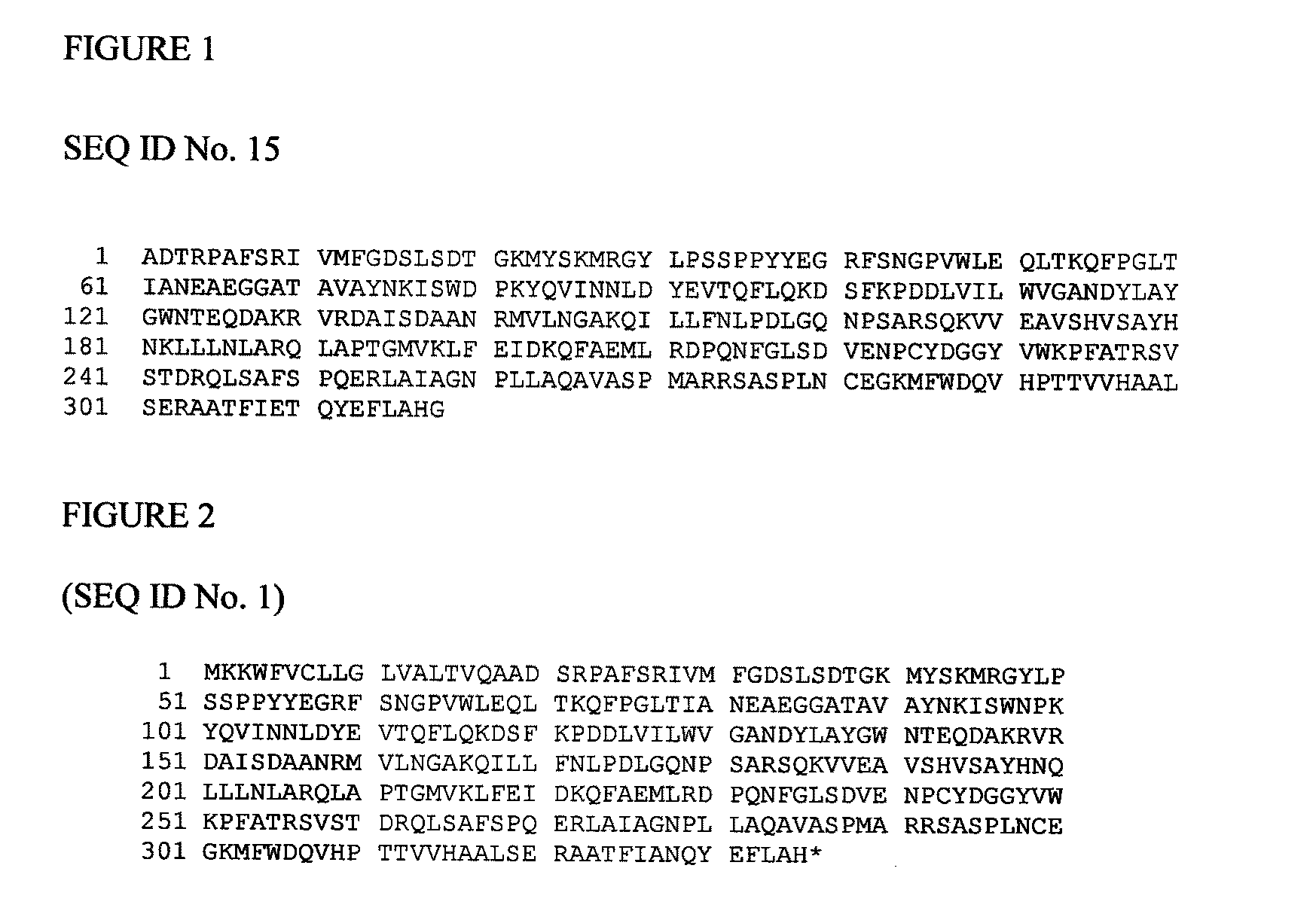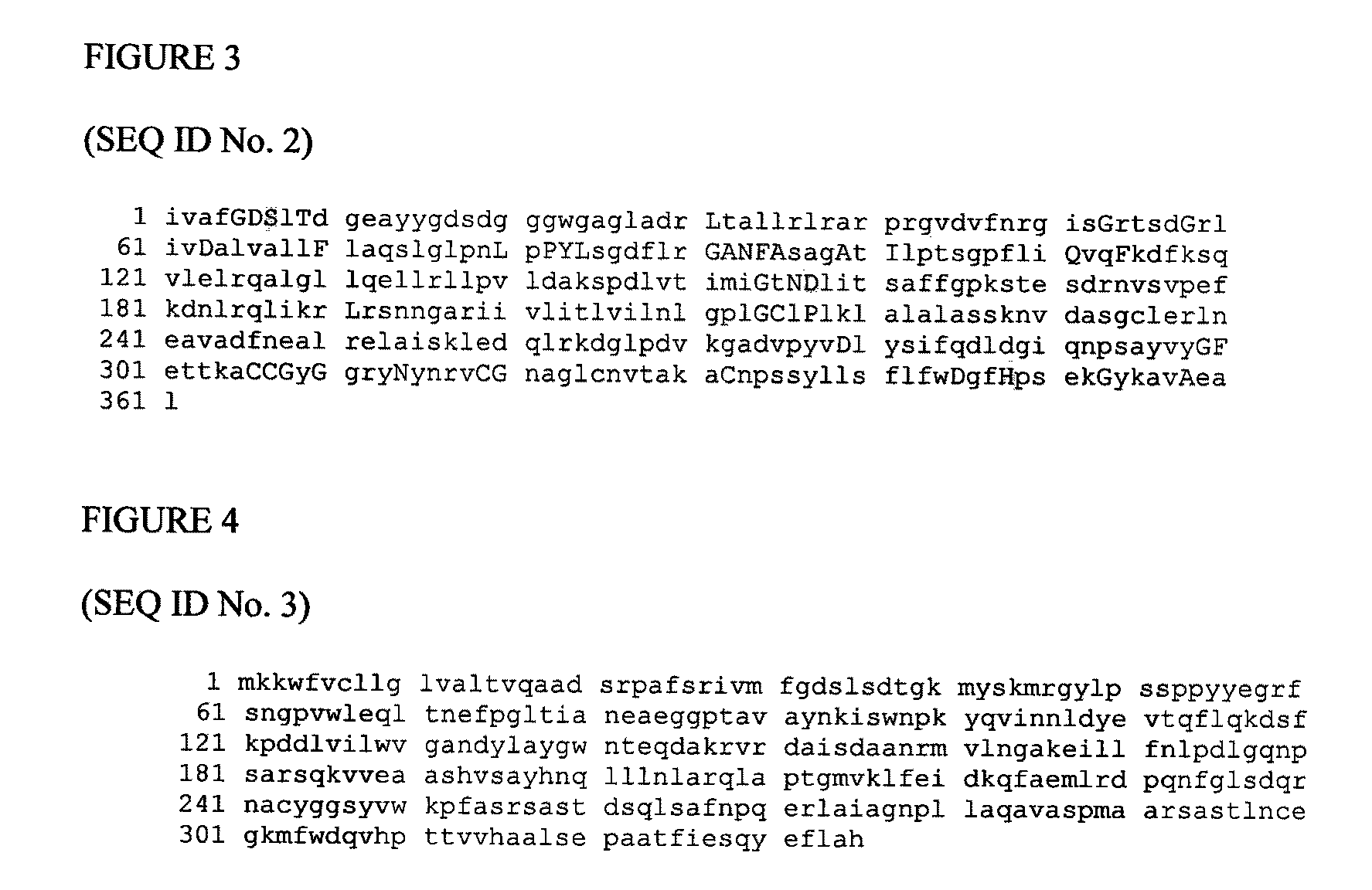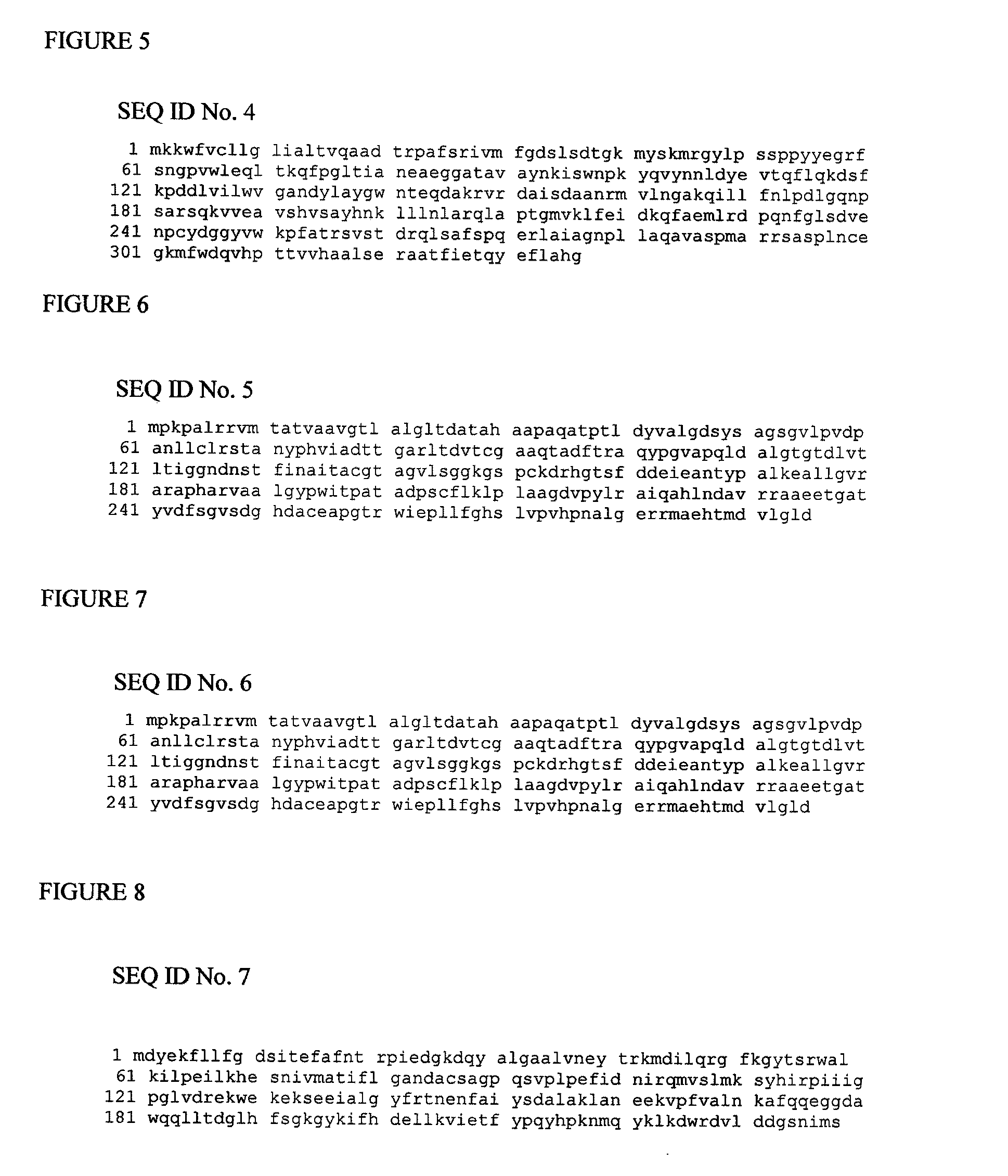Process
a technology of processing and processing equipment, applied in the field of processing equipment, can solve the problems of affecting the quality of meat products, and affecting the application of meat products, so as to reduce the proliferation of spoilage bacteria
- Summary
- Abstract
- Description
- Claims
- Application Information
AI Technical Summary
Benefits of technology
Problems solved by technology
Method used
Image
Examples
example 1
Expression of a Lipid Acyltransferase (KLM3′) in Bacillus licheniformis
[0526]A nucleotide sequence (SEQ ID No. 49) encoding a lipid acyltransferase (SEQ. ID No. 15, hereinafter KLM3′) was expressed in Bacillus licheniformis as a fusion protein with the signal peptide of B. licheniformis [alpha]-amylase (LAT) (see FIGS. 35 and 36). For optimal expression in Bacillus, a codon optimized gene construct (No. 052907) was ordered at Geneart (Geneart AG, Regensburg, Germany).
[0527]Construct No. 052907 contains an incomplete LAT promoter (only the—10 sequence) in front of the LAT-KLM3′ precursor gene and the LAT transcription (Tlat) downstream of the LAT-KLM3′ precursor gene (see FIGS. 35 and 36). To create a XhoI fragment that contains the LAT-KLM3′ precursor gene flanked by the complete LAT promoter at the 5′ end and the LAT terminator at the 3′ end, a PCR (polymerase chain reaction) amplification was performed with the primers Plat5XhoI_FW and EBS2XhoI_Rv and gene construct 052907 as tem...
example 2
Use of a Lipid Acyltransferase (KLM3′) to Reduce the Cholesterol Content of (Whilst Maintaining or Improving Weight Loss, Texture and Fat Stability) of Meat Based Food Products (Namely Fine Paste Sausages)
[0532]Enzymes tested:[0533]Lipid acyltransferase according to the present invention KLM3′ having SEQ ID No. 37 (3158 TrU / g).[0534]Lipomod™ 699L (a pancreatin phospholipase) from BioCatalysts, UK (10,000 Units / ml according to the supplier)—tested for comparative purposes.
[0535]
TABLE 1Formulation of fine paste meat battersRecipe 1: Control without enzymePork meat S II22.50%337.5beef meat R II16.50%247.5Neck fat Pork23.00%345.0ice / water38.00%570.0100.00% 1500.0ingredientsLot Nr.1nitrite curing salt 1.80%27.01STPP 0.10%1.52ascorbic acid 0.05%0.82dextrose 1.40%21.033% NaCl5 mlRecipe 2: KLM3 (0.84 TrU)pork meat S II22.50%337.5beef meat R II16.50%247.5Neck fat pork23.00%345.0ice / water38.00%570.0100.00% 1500.0ingredientsLot Nr.1nitrite curing salt 1.80%27.01STPP 0.10%1.52ascorbic aci...
example 3
Use of a Lipid Acyltransferase (KLM3′) to Improve the Taste and / or Texture (Including Mouthfeel and / or Spreadability) of Liver Sausage
[0588]Liver sausages are generally produced using an emulsifier in order to reduce the risk of fat separation during thermal processing.
[0589]KLM3′ emulsifying effect will be tested in this meat application and compared to an emulsifier, Citrem™ N 12 which is conventionally used in liver sausages.
[0590]The liver sausage is based on a recipe containing a low amount of liver and high content of fat / water, which stresses the liver protein matrix emulsifying capacity.
Material
[0591]Citrem™ N 12 veg (Danisco A / S, Denmark)
[0592]A lipid acyltransferase (KLM3′) according to the present invention having SEQ ID No. 37
Meat Mixture
[0593]
Content meat mixture(%)kgPork liver151.2Pork skin151.2Back fat201.6Water hot / Soup504Total volume1008
[0594]
Recipe 1 ingredientsnitrite curing salt1.80%144.0gspices liver sausage0.60%48.0gCarmin0.05%4.0gDextrose1.00%80.0gascor...
PUM
| Property | Measurement | Unit |
|---|---|---|
| temperature | aaaaa | aaaaa |
| temperature | aaaaa | aaaaa |
| temperature | aaaaa | aaaaa |
Abstract
Description
Claims
Application Information
 Login to View More
Login to View More - R&D
- Intellectual Property
- Life Sciences
- Materials
- Tech Scout
- Unparalleled Data Quality
- Higher Quality Content
- 60% Fewer Hallucinations
Browse by: Latest US Patents, China's latest patents, Technical Efficacy Thesaurus, Application Domain, Technology Topic, Popular Technical Reports.
© 2025 PatSnap. All rights reserved.Legal|Privacy policy|Modern Slavery Act Transparency Statement|Sitemap|About US| Contact US: help@patsnap.com



